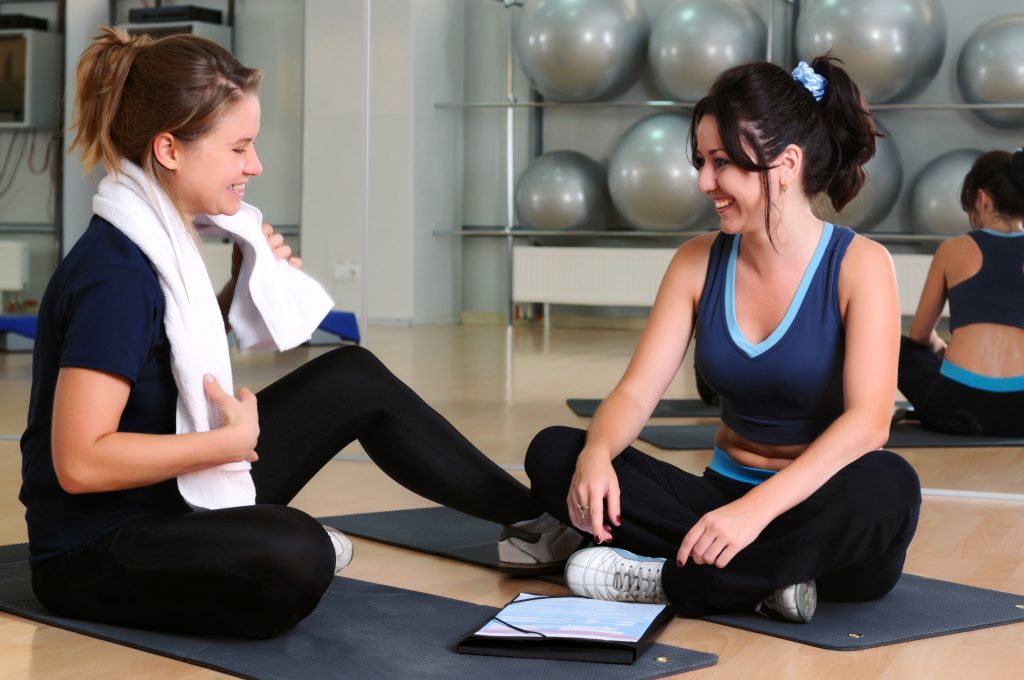Are you ready to make a change in your life and achieve a physically fit body? Physical fitness is an essential part of living a healthy lifestyle, and it can benefit your health both mentally and physically. It doesn’t have to be complicated or overwhelming – with the right plan, anyone can reach their goals and start feeling the positive changes that come from improved physical fitness. In this article, we will discuss how to get started on the journey toward achieving a physically fit body. From developing healthier eating habits to finding stress reduction techniques, this guide will provide all the information you need to begin your journey today!
What Is Physical Fitness?
It is defined as the ability to perform daily activities with vigor and alertness, without undue fatigue, and with ample energy to enjoy leisure-time pursuits and meet emergencies. Physical fitness involves a combination of proper diet, regular exercise, adequate rest, and stress management. Regular exercise helps maintain your heart rate, blood pressure, muscle strength, body weight, and range of motion. These activities also help reduce the risk of heart disease and improve quality of life. A physical fitness program should include aerobic exercises that increase your heart rate for an extended period along with resistance training that works for all major muscle groups to build strength and endurance. Brisk walking is an excellent form of cardiovascular exercise that can be done anywhere at any time. Additionally, stretching exercises are important for increasing flexibility and range of motion while reducing the risk of injury. Lastly, it is essential to select an exercise program tailored to your individual needs and level of intensity to maximize its benefits.
Regular exercise has many physical and mental benefits, from improved mood and energy to a stronger immune system. By committing to an individualized physical fitness program, you can reap the rewards of a healthier lifestyle. Now let’s explore the Benefits of Being Physically Fit!
Benefits of Being Physically Fit
The benefits of physical fitness are well-documented and far-reaching. Regular physical activity can improve your mood, reduce stress and anxiety, increase energy levels, improve sleep quality, boost cognitive function, and even reduce the risk of disease. Additionally, being physically fit can lead to increased self-esteem and improved body image. Being physically fit has both short-term and long-term benefits. In the short term, regular exercise improves strength, endurance, flexibility, and balance while reducing fatigue. Over time it can help lower blood pressure, improve cholesterol levels, prevent weight gain or maintain a healthy weight range, and reduce the risk of type 2 diabetes and other chronic illnesses such as cardiovascular disease. Overall health is improved when we make physical fitness a priority in our daily lives.

Building A Healthy Lifestyle
Building a healthy lifestyle is an important step in achieving a physically fit body. To begin, focus on establishing a routine of daily activities that will promote physical well-being. This could include regular cardiovascular exercises such as brisk walking or jogging, and strength training to build muscle strength and muscular endurance. Establishing a routine of aerobic activities will help to raise your heart rate and improve your overall health. Additionally, incorporate stretching into your exercise program to increase your range of motion and flexibility. Be sure to select exercises that are suited to your current level of fitness and adjust the intensity as you become stronger. Finally, ensure that your diet consists of nutritious foods that provide the necessary vitamins and minerals needed for optimal health and performance. A balanced diet combined with regular exercise will help you achieve a physically fit body over some time while also improving quality of life by reducing stress levels, increasing energy levels, promoting better sleep habits, boosting cognitive ability, reducing the risk of heart disease and other chronic illnesses, maintaining healthy body weight range and more.
By following a routine of regular exercise and a healthy diet, you can achieve a physically fit body that will benefit you in many ways. With the right approach, your efforts will pay off in lasting results that will improve your quality of life and health. And with that, now let’s move on to discussing how important eating habits are for achieving physical fitness.
Eating Habits
Eating habits are an important factor to consider when striving for physical fitness. Eating the right foods can help keep your body healthy, provide energy for exercise and assist in maintaining a healthy weight. To ensure that your diet is balanced, it is important to include servings of fruits and vegetables, whole grains, lean proteins, and healthy fats. Additionally, be mindful of portion sizes and limit the consumption of processed or sugary foods. Eating regularly throughout the day will also help you maintain steady energy levels and avoid overeating at meal times. Furthermore, drinking plenty of water is beneficial for keeping your body hydrated. By taking the time to plan meals ahead of time and stay away from unhealthy choices, you can establish better eating habits that will support your physical fitness goals.
Exercise Routines and Programs
Exercise routines and programs are essential components of achieving a physically fit body. Regular exercise can help to improve heart rate, muscle strength, and overall health while reducing the risk of injury. When creating an exercise program, it is important to consider what type of activities would best suit your physical goals and lifestyle. For example, if you are looking to improve endurance, then aerobic exercises such as brisk walking or jogging may be beneficial. Additionally, strengthening exercises such as weight lifting will help to increase muscle strength and build lean body mass. To maximize results, it is best to include a variety of activities that target major muscle groups over an extended period. It is also important to monitor your heart rate during exercises to ensure that you are working at an appropriate level of intensity for your fitness level. With dedication and consistency, an effective exercise program can help you achieve a physically fit body in no time!
Stress Reduction Techniques
Stress is an unavoidable part of life, but it doesn’t have to control us. Stress reduction techniques can help to reduce the physical and emotional toll of stress and promote overall well-being. For instance, deep breathing exercises can be used to relax the body and mind in stressful situations. Additionally, mindfulness strategies such as meditation or yoga can provide a respite from the pressures of everyday life by allowing you to focus on your breath and body rather than external stressors. Other techniques such as progressive muscle relaxation or journaling can also be beneficial for managing stress. By taking time out of our hectic schedules to practice these techniques regularly, we can become better equipped to handle difficult situations more effectively and enjoy an improved quality of life both inside and outside of work.
Getting Started with Exercise and Physical Activity
Getting started with exercise and physical activity doesn’t have to be complicated. All it takes is a few simple steps to get moving in the right direction. The first step is to assess your current fitness level and determine what type of exercise program works best for you. Once you have a plan in place, start gradually with moderate-intensity activities such as brisk walking or light jogging. Be sure to allow enough time for a warm-up and cool-down period before each session. Additionally, aim for at least 30 minutes of physical activity most days of the week. As you become more comfortable with your routine, you can increase the frequency, duration, and intensity of your workouts over an extended period. Remember that consistency is key when it comes to achieving physical fitness goals; regular exercise helps develop muscle strength and endurance, reduces the risk of heart disease, maintains healthy weight levels, and improves overall well-being. With dedication and perseverance, anyone can achieve a physically fit body!
Exercise and physical activity are essential parts of leading a healthy lifestyle. With dedication, consistency, and the right plan in place, you can reach your fitness goals and feel healthier and happier than ever before! Get ready to take the next step – stay tuned for tips on basic guidelines for safety and comfort while exercising.
Basic Guidelines for Safety and Comfort
When engaging in physical activity, it is important to consider the safety and comfort of your body. Before starting any exercise routine, warm up properly by stretching major muscles and performing light aerobic activities. This will help prepare your body for more strenuous exercise and reduce the risk of injury. During your workout, maintain a safe heart rate and blood pressure while exercising at an appropriate level of intensity. Make sure you are using the proper form to get the most out of each movement. Additionally, be mindful of any sudden changes in the range of motion or pain during activity; if something does not feel right, stop immediately and seek medical attention if necessary. Finally, stay hydrated throughout your workout and take breaks as needed to allow your body time to recover between sets. Following these basic guidelines for safety and comfort can go a long way in helping you achieve a physically fit body!
Building a Routine Based on Goals
Creating a routine based on your personal fitness goals is an important step in achieving a physically fit body. Start by making a list of your desired outcomes, such as increased muscle strength or improved cardiovascular health. This will help you determine which exercises are best suited to meet your needs. Additionally, it is important to be realistic and set achievable targets with incremental progressions along the way. Once you have established what you want to achieve, you can begin designing an exercise program tailored to reach these objectives within a reasonable amount of time. Be sure to include both aerobic and strength training exercises for optimal results. For those just starting, aerobic activities such as brisk walking can be beneficial for improving heart health and burning calories. As your fitness level increases, switch up the routine with more challenging exercises like running or weightlifting to maximize the benefits of your workouts. Aim for consistency and variety to make steady progress toward reaching your goals!
Getting the Most Out of Your Workouts
Getting the most out of your workouts is essential for achieving a physically fit body. To maximize the benefits, aim to get your heart rate up and maintain it within your target zone for an extended period, while also focusing on building strength and endurance. Begin with warm-up exercises to increase blood flow and prepare your body for physical activity. Follow those with cardiovascular exercises such as running or cycling, which will help improve your overall fitness level. Make sure to vary the intensity and duration of each session to keep things interesting and challenging. Additionally, include a range of motion in all major muscle groups by performing strength training exercises like push-ups, squats, or planks. Lastly, don’t forget to cool down after each workout to reduce fatigue and prevent injury. With dedication and consistency, you’ll soon be able to achieve a healthy weight while improving the quality of your life!
Types of Exercises for Physical Fitness
Physical fitness is essential for maintaining a healthy lifestyle and improving the quality of life. Exercise is a key component, and many types can help you achieve your goals. Regular aerobic exercise helps improve cardiovascular health by increasing the heart rate and blood circulation throughout the body. Brisk walking, running, cycling, swimming, and dancing are all examples of aerobic activities. Strength training exercises such as push-ups, squats, pull-ups, and planks help build muscle strength while also increasing flexibility and endurance. Performing these exercises regularly can help reduce body fat while toning the body’s muscles. Flexibility exercises like yoga or stretching can also be beneficial in improving the range of motion in your joints. Lastly, don’t forget to include rest periods between each type of exercise to give your body time to recover from intense physical activity. With dedication and consistency, you can reach your goals for physical fitness in no time!
Physical fitness is a journey, and the rewards of dedication and consistency are most certainly worth the effort. Now that you know about the different types of exercises to help achieve your goals for physical fitness, let’s dive deeper into the benefits of cardiovascular exercises!
Cardiovascular Exercises
Cardiovascular exercises are an essential component of any physical fitness routine. These activities increase heart rate and blood circulation throughout the body, helping to improve overall cardiovascular health. Brisk walking, running, cycling, swimming, and dancing are all examples of aerobic activities that can help reduce the risk of heart disease and stroke while maintaining healthy weight levels. Additionally, these exercises can help build muscular endurance while strengthening major muscles in the body over time. For optimal results, it is important to incorporate a variety of activities into your exercise program and adjust the level of intensity according to your individual needs. Finally, it is essential to take extended periods of rest between each type of exercise so that your body can recover from intense physical activity before resuming daily activities. With dedication and consistency, you can enjoy the rewards of a physically fit body for years to come!

Conclusion
In conclusion, a physically fit body is achievable with dedication and consistency. Regular exercise is key to achieving this goal, and it is important to incorporate a variety of activities into your exercise program. Maintaining a healthy lifestyle which includes an appropriate diet and plenty of rest can also be beneficial in improving overall physical fitness. With the right attitude and commitment, you can achieve a healthier body within a reasonable period while also improving your quality of life. By gradually increasing muscle strength and flexibility through aerobic exercises, you can reduce body fat levels and improve your range of motion for better health overall. Finally, monitoring blood pressure levels regularly will help ensure that your body is on track toward achieving physical fitness goals.

